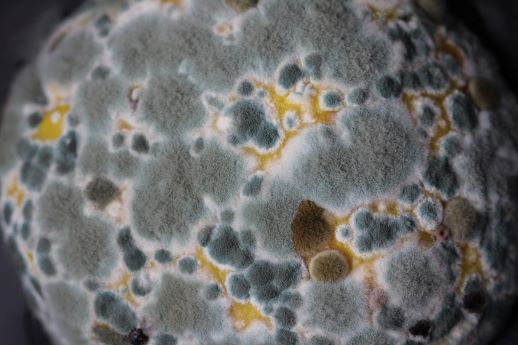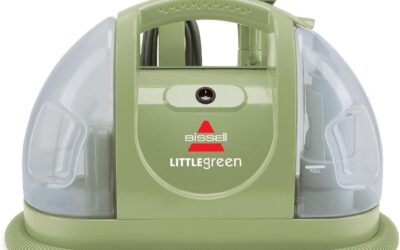Introduction
A fabric couch or sofa adds elegance and comfort to your living space, but it can become susceptible to mould growth if not properly cared for. Mould can not only mar the aesthetic appeal of your furniture but also pose health risks. In this comprehensive guide, we will explore various strategies to effectively deal with mould in fabric couches and sofas, ensuring a clean and inviting environment for your home.
How to Deal with Mould in Fabric Couch/Sofa
Fabric couches and sofas are prone to mould growth due to their absorbent nature and exposure to moisture. To successfully combat mould and preserve the beauty of your furniture, follow these steps:
1. Identify the Source of Moisture
Mould thrives in damp environments. Locate the source of moisture that is promoting mould growth. Check for leaky windows, damaged roofs, or poor ventilation. Fixing these issues will help prevent future mould infestations.
2. Remove and Wash Cushion Covers
Start by removing the cushion covers from your couch or sofa. Check the care labels for washing instructions. Use a mild detergent and hot water to wash the covers. Ensure they are completely dry before reassembling them on the furniture.
3. Vacuum Thoroughly
Use a vacuum cleaner with an upholstery attachment to remove loose mould spores, dirt, and debris from the fabric. Pay special attention to seams and crevices where mould can hide.
4. Prepare a Cleaning Solution
Create a cleaning solution by mixing equal parts of water and white vinegar. Vinegar has natural antimicrobial properties that can help eliminate mould and prevent its recurrence.
5. Test a Hidden Area
Before applying the cleaning solution, test it on a small, inconspicuous area of the fabric to ensure it does not cause any damage or discolouration.
6. Clean the Fabric
Dip a clean cloth or sponge into the vinegar solution and gently blot the affected areas of the fabric. Avoid oversaturating the fabric, as excessive moisture can worsen the mould problem. Allow the fabric to air dry.
7. Sunlight and Fresh Air
Place the couch or sofa in a well-ventilated area with direct sunlight. Sunlight and fresh air are natural enemies of mould and can help kill the remaining spores.
8. Use a HEPA Air Purifier
Invest in a HEPA air purifier to improve indoor air quality and reduce the presence of mould spores in your home.
9. Apply a Fabric Protector
Consider applying a fabric protector to your couch or sofa after cleaning. A fabric protector creates a barrier that repels liquids and prevents mould growth.
10. Maintain Proper Humidity
Keep your indoor humidity levels below 50% to discourage mould growth. Use a dehumidifier if necessary, especially in humid climates.
11. Regular Cleaning Routine
Establish a regular cleaning routine that includes vacuuming, dusting, and checking for signs of mould. Promptly address any issues to prevent mould from spreading.
12. Professional Cleaning
If the mould infestation is extensive or persists despite your efforts, consider hiring a professional upholstery cleaning service. They have the expertise and equipment to thoroughly clean and disinfect your furniture.
13. Natural Remedies
Natural remedies like tea tree oil, grapefruit seed extract, and baking soda can also help deter mould growth. Mix a few drops of essential oil with water and spray it on the fabric. Remember to test these remedies on a small area first.
14. Store Properly
If you plan to store your fabric couch or sofa, ensure it is clean and completely dry before placing it in a storage area. Use breathable covers to prevent moisture buildup.
15. Address Water Damage Quickly
In case of water damage, address the issue promptly to prevent mould from taking hold. Dry out the affected area thoroughly and consider replacing any irreparably damaged cushions or fabric.
16. Regular Inspection
Regularly inspect your couch or sofa for any signs of mould, especially in areas that are not easily visible. Early detection can help you address the problem before it worsens.
17. Avoid Overcrowding
Avoid placing your furniture in overcrowded or poorly ventilated areas. Adequate air circulation can help prevent moisture buildup and mould growth.
18. Follow the Manufacturer’s Guidelines
Always follow the manufacturer’s guidelines for cleaning and maintenance. Using improper cleaning methods or products may void the warranty.
19. Act Quickly
If you notice any mould growth, act quickly to prevent it from spreading. Ignoring the issue can lead to more extensive and costly damage.
20. Proper Storage During Humid Seasons
During humid seasons, consider using a dehumidifier or storing your fabric couch or sofa in a dry area to prevent mould growth.
FAQs
Can I use bleach to clean mould from my fabric couch?
No, it is not recommended to use bleach on fabric couches, as it can damage the fabric and potentially lead to discoloration. Stick to mild cleaning solutions like vinegar and water.
How often should I clean my fabric couch to prevent mould?
It’s advisable to clean your fabric couch at least once every three to six months, depending on usage and environmental conditions.
Can I prevent mould growth by keeping my fabric couch in direct sunlight?
While sunlight can help kill mould spores, it’s not a foolproof method for preventing mould growth. Proper ventilation, humidity control, and regular cleaning are also essential.
Can mould on a fabric couch be harmful to my health?
Yes, mould can release allergens and irritants that may cause health issues, especially in individuals with respiratory problems or allergies.
Are professional cleaning services worth it for mould removal?
Yes, professional cleaning services have the expertise and specialized equipment to effectively remove mould from fabric couches and ensure a thorough clean.
Can I use a hairdryer to speed up the drying process after cleaning?
Using a hairdryer on high heat may cause more harm than good, as excessive heat can damage the fabric. It’s best to allow the fabric to air dry naturally.
Conclusion
Dealing with mould in fabric couches and sofas requires a proactive approach and regular maintenance. By following the steps outlined in this guide, you can effectively remove mould and prevent its recurrence, ensuring a clean and comfortable living environment. Remember, a combination of proper cleaning, ventilation, and moisture control is key to preserving the beauty and longevity of your furniture.
Related Posts
Best Way to Clean a White Leather Sofa: Ultimate Guide to Cleaning White Furniture
Best Way to Wash Couch Cushions: A Comprehensive Guide to Deep Cleaning
The Best Way to Clean a Fabric Couch: A Comprehensive Guide
Velvet Sofa Cleaning Tips: Expert Advice for a Luxurious and Pristine Velvet Couch
Removing Pet Stains from Sofa: A Comprehensive Guide
Upholstered Furniture Spot Cleaning: A Comprehensive Guide to Keeping Your Furniture Fresh and Clean
The Science Behind Sofa Stains: Understanding Different Types of Stains and How to Treat Them
The Hidden Dangers of a Dirty Sofa: Why You Need to Clean Your Sofa Regularly
Leather Sofa Cleaning: Tips and Tricks for Keeping Your Leather Furniture Looking New





0 Comments